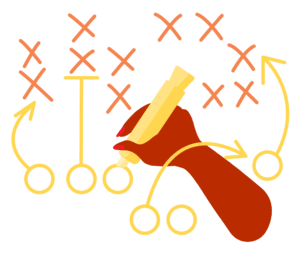
29 Mar Top Tips for Survey Prep
The White House recently said that the current public health emergency (PHE) would “likely” last through the entirety of 2021. For now, blanket waivers have relaxed industry regulations, offering provider relief, but it is not time to rest on your laurels. Wisdom dictates that agencies should take this opportunity to regroup and refortify.
CMS has not changed the frequency of surveys in response to the COVID-19 pandemic, but agencies may see delays. Currently, states are prioritizing complaint surveys however, standard surveys are still happening.
In this edition of our home health software blog, we’ll review best practices to prepare for the CMS Home Health Agency Survey, with emphasis on top tips for the survey that will ease concerns and ensure success. If you really want to know what surveyors will be looking for the next time they walk through your door, read on.
State Survey
The Center for Medicare and Medicaid Services (CMS) defines the Conditions of Participation (CoPs) program. Agencies on the state level enforce these conditions by performing on-site surveys. The first step to prepare for a survey is to know the ins and outs of what a survey is.
The purpose of the state surveyor coming into your office is to examine the services you are providing. The surveyor will evaluate your structure, processes, care quality, and ultimately your outcomes.
 The Survey Process
The Survey Process
Before you get the secrets, it is vital to get the process. The survey is an evaluation of an agency’s performance on the CoPs. The CoPs outlined in the 42 Code of Federal Regulations (CFR) Part 484 ensure that agencies meet basic health and safety standards to provide safe care.
Each CoP consists of multiple standards called “G-tags.” These are categorized by severity.
- Level 1 (Highest Priority) most impact on patient care
- Level 2 moderate impact on patient care
- Level 3 least impact on patient care
When it comes to the survey preparation, focus your efforts on the Level 1 G-tags to minimize sanctions.
Standard Survey
The visit begins as a Standard Survey, and surveyors look at the Level 1 standards. If the home health agency is found to be within compliance, then the survey ends. Yay!
Partial Survey
In the unfortunate event the surveyor identifies areas of deficiency, then the process escalates to a Partial Extended Survey. This type of review includes evaluation of the Level 2 standards and whatever else the surveyor decides.
A deficiency can be either standard level or condition level.
Standard level deficiency is defined as “noncompliance with one or more of the standards that make up each condition of participation for HHAs.”
Condition level deficiency is defined as “any deficiency that substantially limits the provider’s or supplier’s capacity to furnish adequate care or which adversely affects the health or safety of patients. According to §488.24, the State Agency surveyor will certify that a provider is not in compliance with the CoPs where the deficiencies are of such character as to substantially limit the provider’s capacity to furnish adequate care, or which adversely affect the health and safety or patients.
Extended Survey
When the surveyor identified problems with the Level 1 conditions, the Extended Survey ensues.
This entails surveyors reviewing policy and procedures, personnel records, contracts, clinical procedures, home health aide training and evaluations, complaint forms, and the agency’s practices that could lead to substandard care.
The next steps depend on the situation. If the surveyor suspects an immediate jeopardy situation that caused or is likely to cause serious injury, harm, impairment, or death, the surveyor may immediately suspend operations.
Now that you understand the purpose and process, here are the top tips for successful survey prep.
Tip #1 The Survey Starts Before the Visit
The survey starts before the visit for you and for them.
For you, your preparation is ongoing. The processes you develop, and your documentation are the keys to shining on a survey. Show surveyors that you have the right foundation and pathways established, and the survey will be easier for you and them.
Surveyors begin their audit of your processes before you even see them coming. Pre-survey preparation begins with an offsite review of potentially avoidable events.
The three CASPER reports that surveyors review before the site visit are:
- Risk-Adjusted Potentially Avoidable Event Report (12 months)
- Potentially Avoidable Event Report: Patient Listing (12 months)
- Agency Patient-Related Characteristics Report (12 months).
They can also access any other information they think is related. What is your recertification rate? What are your top diagnoses? What are your patient satisfaction scores and care outcomes?
These evaluators have a checklist, and so should you.
Before a surveyor ever enters your agency, the survey begins with a review of the following:
- Licensure documents
- Previous survey reports and plans of action
- Complaint history and resolution.
These documents give the surveyor an idea about your care before they even arrive. It is essential to keep these reports updated and monitor them for trends.
Tip #2 – You Already Have Their Playbook
The surveyor guidance and the manual for the state surveyors are readily available online. Take advantage of the fact that you already have their instructions. If you already know what they will say and do, then you can stay ahead of them, or at least in step with them.
You can find the guidance to surveyors in the State Operations Manual SOM Chapter 10.
For example, the State Operations Manual advises surveyors to:
- review clinical records (charts)
- interview patients, staff, and others
- observe the agency’s practices, i.e., home visits.
“Surveyors should base any deficiency on a violation of the statute or regulations, which is identified through clinical record reviews, interviews with the HHA’s patients, staff, and others as appropriate and direct observations of the HHA’s performance and practices. (See §2712.)” –Page 10, Chapter 10 State Operations Manual
 CMS provides this guidance to surveyors. Find the rest of the Guidance to Surveyors here, updated in 2020. Agencies must stay up to date on changes, the revisions modified surveyor preparation, protocols, and evaluation of findings. The most recent version is focused more on quality care and patient outcomes.
CMS provides this guidance to surveyors. Find the rest of the Guidance to Surveyors here, updated in 2020. Agencies must stay up to date on changes, the revisions modified surveyor preparation, protocols, and evaluation of findings. The most recent version is focused more on quality care and patient outcomes.
Being familiar with the CoPs and understanding the survey process are the best ways to maintain continuous compliance and stay survey ready.
Pay attention to the Interpretive Guidelines. These guidelines interpret and clarify the CoPs.
Statistics regarding survey deficiencies are public information. Agencies can know the top deficiencies and focus efforts on these (more on that a little later). Help staff master the CoPs that are most likely to be scrutinized. You can be proactive which will likely impress your surveyor.
Tip #3 – Work Smarter, Focus Your Efforts
The Public Health Emergency Extension required CMS to pause or modify regulations through a series of CMS 1135 waivers. See more on that in Alora’s PHE Extension blog post. Meanwhile, some regulations have been emphasized.
As an example example, many home health agencies have seen surveys specific to Infection Control practices. Emergency Preparedness is sure to be a hot topic as well. Be ready for these Focused surveys.
Agencies should be aware of the interim guidance and use it to their advantage. For example, they may be more lenient about timely initiation of care. In cases where nursing and therapy services are ordered, nursing is required to initiate the assessment. However, if therapy is admitted first, you may have some leeway here.
CMS publishes information regarding the deficiencies that they cite. The top 10 federal citations for 2019 were:
- Promptly alert the relevant physician of changes (G590)
- Components of POC (G574)
- Clinical Notes (G716)
- POC includes a review of current medications (G536)
- Services to be provided per POC (G710)
- Each patient has a POC signed by a physician (G572)
- Verbal orders are accepted in compliance with state laws/home health policies & procedures (G584)
- Services are coordinated to meet patient needs (G608)
- Precautions to prevent transmission of infections and communicable diseases (G682)
- Patient rights (contact information for agencies including QIO, Advocacy, etc.) (G446)
*New: Emergency Preparedness testing program (E-0039)
Tip #4 – The Best Preparation is Constant and Ongoing
Regardless of the purpose of the state survey, the visit will be unannounced. Understand that survey is required at certain time points.
- Routine (initial licensure and every three years)
- When there is a complaint
- For Change of Ownership (CHOW)
- Reactivation of billing
- A significant change in services
- Addition of a Branch
- Look-behind survey
- Or Validation survey
There are multiple types of surveys. A visit could happen anytime, thus survey preparation is constant and ongoing.
One way to keep preparation constant and ongoing is to incorporate the regulations into your day-to-day operations. Use the G-tags to guide your processes. Teach them to your staff. Education will prepare them to be interviewed or observed during a home visit. Agencies should also educate employees about the survey process and home visits. When the time comes, they will understand their role.
Tip #5 – You Have Important Responsibilities
It is your responsibility to be prepared for the survey. Here is what you must do.
After the surveyor has identified themselves and the purpose of the visit, the agency must contact the administrator or an acting administrator. The agency must also provide space for the surveyor to work. The area should be a quiet workspace. Entrance and exit conferences can occur there as well. Prepare a room or office that is away from high traffic areas that could distract the surveyor.
The surveyor will need a copy of the organizational chart, lines of authority, list of provided services, and information about additional branches or locations. A list of all active patients with the admission date, primary diagnosis, and services received is required, along with a list of current (direct and contract) staff. The surveyor will ask for titles of the key administrative and clinical staff for the interviews.
Agencies are responsible for giving the state surveyor access to the clinical records (paper and electronic) and providing whatever assistance or guidance as needed. When requested, the agency must make copies of any documents the surveyor needs.
Some agencies maintain a Survey Handbook so that when a surveyor arrives, they are ready. Consider keeping the guide online and updating it regularly. The main documents to include are:
- Copy of State License
- Service Area Map
- Instructions for accessing the required reports, username, and log-in credentials
- Copy of the Clinical Laboratory Improvement Amendments (CLIA) waiver, if any.
- Sample admission packet and consents
- Contract List
- Organizational Chart
- The governing body, Committees List and meeting minutes
- Inservice List / Calendar
One reason home health administrators dread the survey is the possibility of deficiencies. A deficiency can mean serious sanctions when problems are found. Failure during a state visit could mean:
- Directed corrective action plans
- Directed in-service training requirements
- Huge civil fines, up to $21,800 per day until resolution
- Temporary suspension of payments
- Termination of your contract with Medicare
- Temporary management of the agency
- Agency closure
Tip #6 – You Have Valuable Rights
Know your rights during and after a survey.
Agencies should not feel as if they are at the mercy of the state. Rights that can, and should be exercised include:
- The right to request clarification of any surveyor statement or comment
- Offer to escort the surveyor for in-home visits.
- Offer additional information to the surveyor, including documentation, policies, input, and CMS guidance for clarification.
- Request assistance from a regional office if there is a conflict with a surveyor
- Request additional team members to join the exit conference
- Fully review the preliminary findings in the exit conference and provide additional evidence BEFORE a statement of deficiency is issued
- May record the audio of exit conference, but must provide a copy to the surveyor; may record video of the exit conference with surveyor permission
- Contact the surveyor, their supervisor, and their regional office if there is an error in the statement of deficiency
- Submit an Informal Dispute Resolution (IDR) process to dispute with condition-level deficiency or write a plan of correction
- Appeal sanctions
The exit conference is the best time to address disagreements with the surveyor. This last opportunity to plead your case lets you show the surveyor your point of view. Once they complete the written statement and cite a deficiency, a plan of correction is required regardless of whether it was correct or not.
As an example, if a physician was hospitalized due to COVID-19 and subsequently appointed another physician to cover for them and sign orders, you would want to clarify this for the surveyor. At the exit conference, you might even want to provide documentation to prove this. The Medicare Entitlement Manual allows for temporary substitution in cases like this. Do not think that just because a surveyor finds an issue that you are stuck. Respectfully offer what insight you can to help justify your case.
Summary
As CMS resumes survey and audit activity, now is the time for agencies to take advantage of these top tips for survey prep. Now you know what surveyors will be looking for next time they walk through your door. Your success is up to you. Good luck!
How Can Alora Help?
Alora can help with survey prep by offering reports and analytics to help you monitor referrals, clinical performance, productivity, finances, personnel, and compliance. Using a quality Home Health Software solution will benefit agencies with survey and other agency workflow protocols, procedures, and challenges.
Share this valuable resource with your team.
Author’s Note: Views, information, and guidance in this resource are intended for information only. ALORA is not rendering legal, financial, accounting, medical, or other professional advice. Alora disclaims any liability to any third party related to this content. ALORA Healthcare Systems does not make any explicit or implied guarantees related to the content.

No Comments